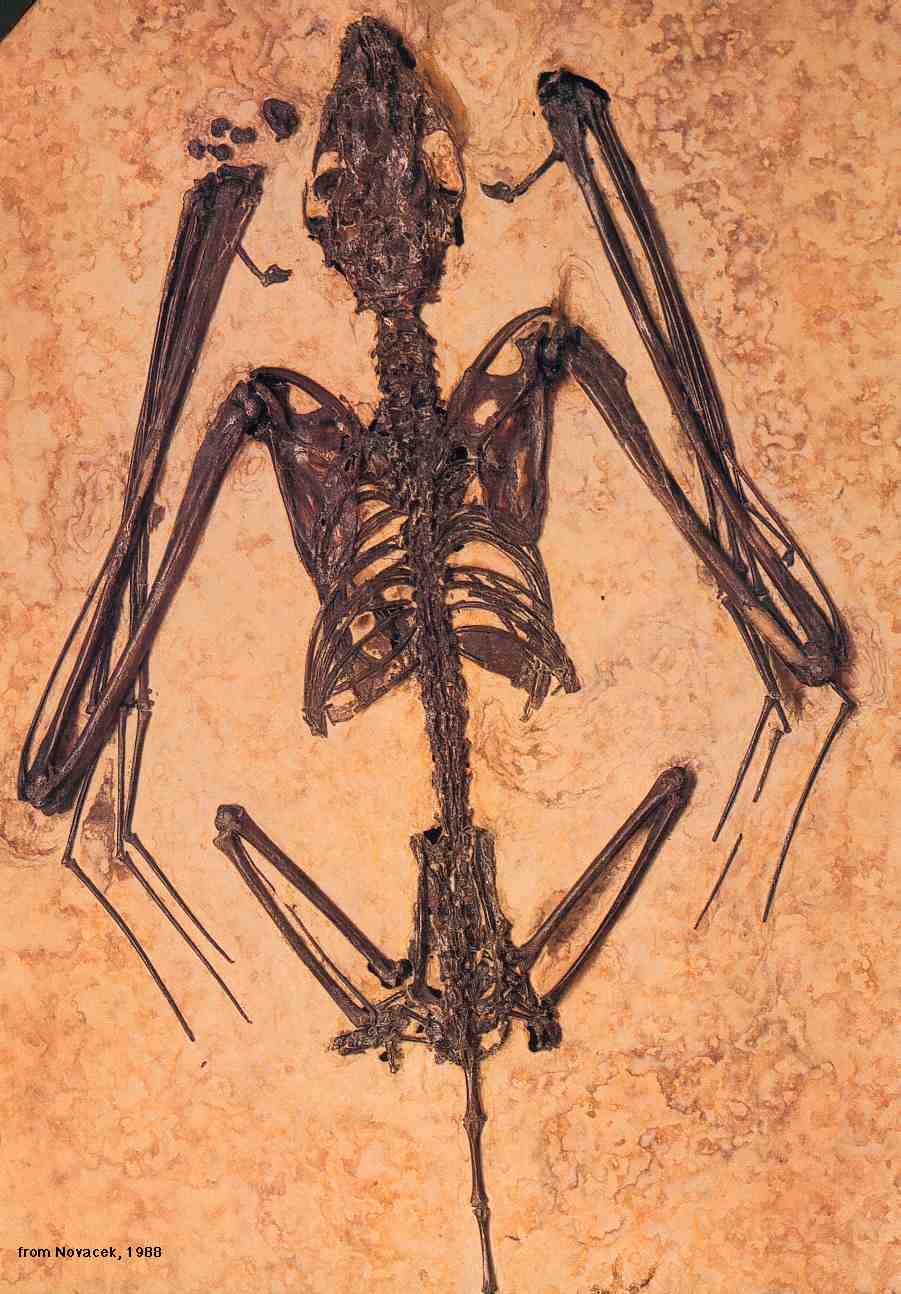
|
The Evolution of Chiroptera |
|
The Chiropteran fossil record
Although bats are one of the most diverse groups of mammals today, they are one of the least common groups in the fossil record. Bats have small, light skeletons that do not preserve well and we have little information on the early evolution of this group. The earliest fossil bat (shown here) is a remarkably well preserved animal from early Eocene rocks in the Green River formation of Wyoming. Given the name Icaronycteris, it comes from a species that is clearly microchiropteran6. The oldest known megachiropteran, Archaeopteroptus transiens, is Oligocene (38-23 mya) in age. It and a Miocene (23-25 mya) fossil from Africa make up the entire known fossil record of megachiropterans. |
 Icaronycteris index |
The inability to link bats to any other mammalian group in itself suggests a very early origin. Some fossilised eggs of noctuid moths, with the ablity to detect echolocation calls of bats and trigger escape responses , have recently been discovered dating back to about 75 MyBP5 implying that the bats themselves arose substantially earlier, about 80 to 100 m.y.a.6. If so, they would have shared their world with dinosaurs, watched their extinction at the end of the cretaceous and remained, relatively unchanged, to this day.
Why did bats evolve?
At the time bats are thought to have been evolving, the flowering plants were in the first stages of their massive diversification. By the end of the Cretaceous, the insects supported by these plants were abundant, and insectivorous mammals were becoming well established4. But so were the predators of small mammals, posing a serious threat during daylight hours. For these reasons, it is presumed early species of bat were nocturnal, evolving from small, arboreal mammals16. From here they literally launched themselves into flight, becoming the highly successful aerial hunters we see today.

Over thousands of years of jumping around after insects, from tree to tree, the ancestors of bats first evolved gliding membranes similar to those of colugos (order Dermoptera) . Less energy is expended in gliding from tree to tree than running down the trunk, across the ground and back up the next tree. And if an animal doesn't come down to ground, it doesn't have to face terrestrial predators either.
Significant differences have arisen between the two suborders since their divergence causing some confusion as to whether they are related at all. There have been numerous studies using biochemical, molecular, and/or morphological data to analyse the relationship between megabats, microbats and other taxa. The 'bat monophyly hypothesis' states these two groups are each others' closest relatives in an evolutionary sense (i.e. they form a clade). In contrast, the diphyly hypothesis states that megabats and microbats evolved independently from two different groups of non-flying mammals. It has been suggested that megabats are more closely related to dermopterans and primates than to microbats10,11. The bat controversy has raised some interesting questions and forced us to question long-held beliefs. Systematists have learned that important phylogenetic questions can only be answered with input from a wide variety of fields - taxonomy is a truly multidisciplinary subject! |







